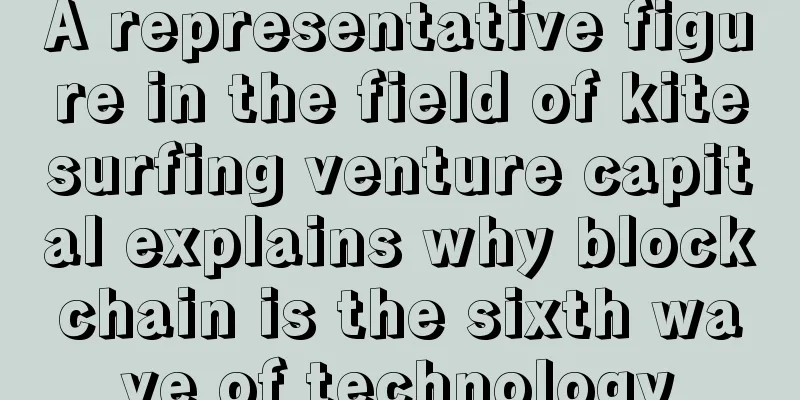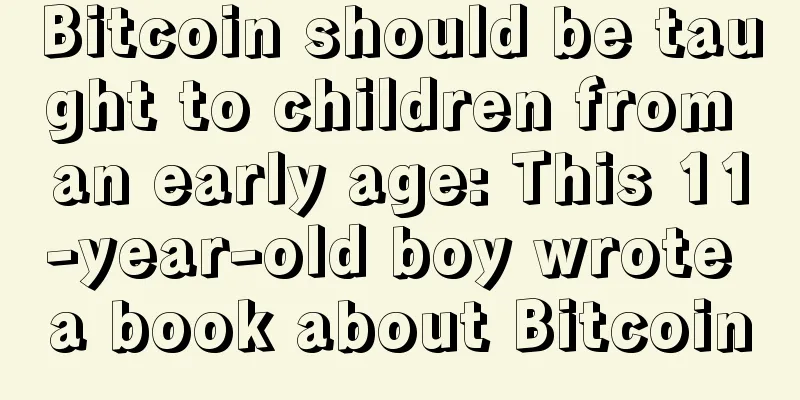A representative figure in the field of kitesurfing venture capital explains why blockchain is the sixth wave of technology

Translation: Annie_Xu Bill Tai has a cheerful, outgoing manly demeanor and is engaged in some of the most exciting development projects of our time. Bill Tai became a venture capitalist in the kitesurfing field at the perfect time and place for the development of both technology and kitesurfing. His online name KiteVC is a reflection of his identity. Tai is an investor in mining and blockchain service company Bitfury and blockchain data analysis company Blockseer, with 30 years of technical work experience. He puts blockchain technology in the context of technological revolution, equating the TCP/IP protocol, the foundation of the Internet, with the advent of blockchain. He tells us the details behind smart contracts, Twitter, and AirBnb with very attractive stories. In this episode of the Unchained podcast, Tai explains how Bitcoin enthusiasts with no background in chip design developed an efficient Bitcoin mining chip ASIC, how a blockchain support group was formed at Richard Branson’s Necker Island Blockchain Summit in 2015, and how he turned his passion for kitesurfing into a global kitesurfing and technology integration event represented by MaiTai Global. Tai surveys blockchain technology today and argues that it is different from the Internet of 1992-1994.
Tai studied computer chip design at the University of Illinois and started working in Silicon Valley early. He joined LSI Logic, founded by the CEO of Fairchild Semiconductor, a forerunner of companies that would later lay the foundations for Silicon Valley, such as Intel, AMD, and National Semiconductor. After graduating from Harvard Business School, he helped the Taiwanese government build the semiconductor industry, which later grew into a company with a market value of $130 billion. He later became a semiconductor analyst and venture capitalist, investing in routers, hubs, switches, and founding iAsiaWorks, an ISP and data center, which went public in 1994. Other companies he has invested in include Canva, Tweetdeck, Zoom, and Scribd. Tai said:
That's how Treasure Data, the podcast that records everything, came about.
Tai believes that the sixth wave of technology has emerged, with data being the fifth and blockchain being the sixth. "I think the first wave was a bunch of scientists turning physics into useful products - semiconductors." The second wave was companies making computers, communications equipment, switches, routers, hubs. Think Cisco, Apple, Dell, "any company that puts a little package of physics into a box that can move atoms." The third wave saw the emergence of Internet service providers and data center infrastructure, which connected these boxes to form local and wide area networks and the Internet. The fourth wave added user interfaces to the previous networks. "Instead of hardware protocol engineers developing networks that run information behind the scenes, it was kids like Zuckerberg developing Facebook in their bedrooms, or Jack Dorsey writing Twitter in seven days." The fifth wave is the data stage. Companies are starting to collect data on user behavior and even penetrate the physical world. "If you think about a company like Walmart, it's actually a cutting-edge data science company with physical stores because they can see how everything is flowing inside." The sixth wave is blockchain. Tai said that thanks to companies like Uber and AirBnb, "people have become accustomed to a model that I call virtualization. They are accustomed to physical objects or values being virtualized into digital form and circulated in the transportation system." Now blockchain allows us to transfer bitcoins, and eventually we can also transfer the ownership of houses, cars or land. As this medium blog post shows, Tai says blockchain is to banks what TCP/IP is to telecom companies. When the Internet first emerged, networks like UNIX, Sun Microsystems, Novell, etc. existed independently; then Cisco brought us multi-protocol routers that can convert different data formats. In the blockchain field, he sees private chains developed by banking alliances and public chains developed by open source communities, which will eventually be integrated into larger networks.
He acknowledged that there is a competitive mentality between Internet finance startups and banks, so there are lessons to be learned from the experience of telecom companies. "The Internet is ultimately a win-win for everyone. Everything is integrated together, which is the general trend; therefore, life is better." |
<<: Merkle Tree inventor hopes DAO will become the world's dominant management model
>>: Decentralizing IoT networks with blockchain
Recommend
Women with tired faces
If a woman has a hard life, then it is easy for t...
Do you know what a man's broken eyebrows mean?
Eyebrows are the most important of the five facia...
An article to answer various questions about mining BTM with graphics cards
After the BTM graphics card mining tutorial came ...
Is it good to have a birthmark on the neck? What does a birthmark on the neck mean?
Many people know about birthmarks. They are not v...
Will your USDT explode? New York State approves multiple stablecoins but no USDT
Faced with numerous negative news about USDT, man...
The fate of people with full occipital bones, how to see the fortune through the occipital bones
In life, many people have flat occipital bones at...
Grayscale: There are still risks in the rising crypto market. How to determine the future trend?
Bitcoin, which broke through $50,000, is on the d...
M pattern palmistry chart_What does M pattern represent
There are various types of palm lines, such as tr...
Bitcoin trading platform awaits confirmation from the central bank that withdrawals will resume after restart
Image source: Oriental IC Source: Interface Huobi...
Russia's Ministry of Finance: No additional taxes will be imposed on cryptocurrency miners and holders
According to the South Korean Global Economic New...
Is the marriage of a woman with a nose bump happy?
What is the personality of a woman with a bump on...
How to read a woman's fortune through palmistry
Our fortune can be seen from our palms; so, how t...
The secret method of physiognomy tells you which years to pay special attention to
Numerology gives us a kind of guidance. Those who...
What exactly is AsicBoost? It has caused a stir in the mining industry.
Last night, a piece of news exploded the mining c...
How does a woman with pointed cheekbones look like?
Usually, both personality and fortune can be seen...









